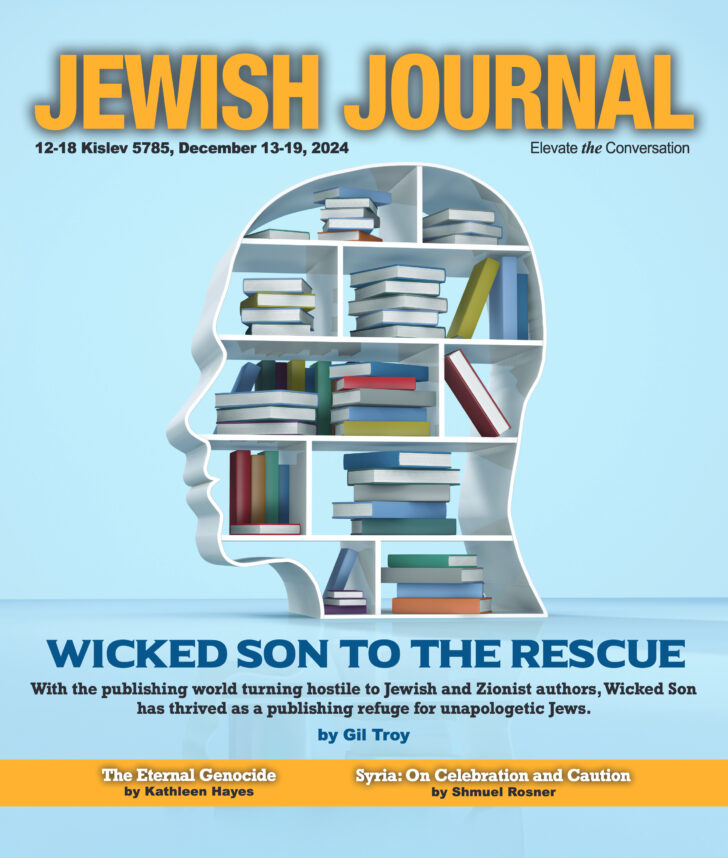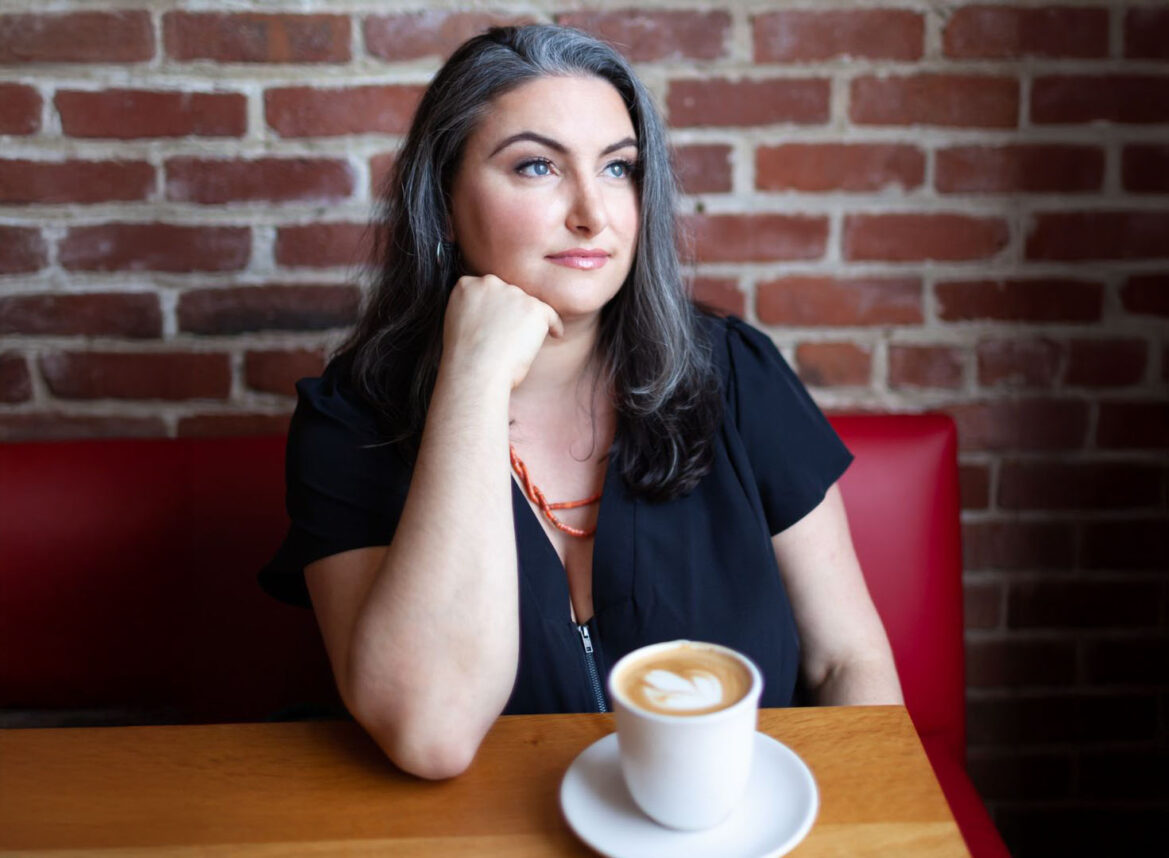I am writing to correct a small, but significant,error in your article “Taking a Stand,” written by Ruth Stroud (Mar.27), which referred to a recent meeting of the Jewish CommunityRelations Committee executive committee wherein the subject ofProposition 227, the so-called “English for the Children” initiative,was discussed.
The article was well-written and correctlyreflects the tone and outcome of the March 11 meeting. The error,however, occurs in the sentence which reads that I support theproposition. I would like to make it perfectly clear that I donot supportProposition 227, and that I do believe that this proposition”is relevant to the Jewish community, since about 65 percent ofJewish children attend Los Angeles public schools,” as Istated.
In addition, my remarks to Ms. Stroud with respectto the meeting reflected my personal opinion, and arose from my longinvolvement with the Jewish Community Relations Committee and theleadership role that I believe it should play in the organized Jewishcommunity. Consequently, it should not be construed that I wasspeaking for the Board of Education of the Beverly Hills UnifiedSchool District.
Virginia Maas
Beverly Hills
Ruth Stroud responds: As Virginia Maas statesabove, she informed me during an interview that she opposesProposition 227. In the process of writing a story on the JCRC, Imistakenly wrote that she supported the so-called “English for theChildren” initiative.
*
The issues raised in last week’s article about theJCRC and its position or lack thereof on the bilingual educationinitiative reflects rumblings that go back for at least two decadesto when bussing was first considered in Los Angeles. The debate aboutwhat the role of the “organized” Jewish community should be hasalmost always had a subtext of what was an appropriate position foran umbrella organization that represents a pluralistic community,especially one that is, at its core, about charitablefundraising.
No one is suggesting that the Jewish communityabdicate its traditional role in playing an active role in politicalaffairs. What is being suggested is that the JCRC must impose certainparameters on itself as part of an organization representing theentire community, painful as that is for many who have a long andstoried history of activism.
For issues outside of these parameters, there aremany other Jewish organizations that speak more clearly on behalf oftheir constituencies than the JCRC. At the end of the day, theseorganizations may, in fact, be more effective advocates.
David Novak
Santa Monica
*
The actions that led to my resignation from theJCRC raise a profoundly important question for the future of the JCRCand its prospective leaders: If Proposition 227 and the future ofbilingual education are not “Jewish” issues, what are?
A significant portion of the JCRC’s communityrelations agenda has historically been devoted to our educationalsystem. Much of this activity has involved enforcement of FirstAmendment principles, especially on issues of school prayer,vouchers, accommodating religious practices and “equalaccess.”
Moreover, the JCRC’s support for public educationhas never stopped at the church/state wall. Indeed, less than a yearago, the JCRC actively supported passage of Proposition BB, the $2.4billion bond measure to repair old and dilapidated school classroomsand buildings.
This is perhaps not surprising for a communitythat so highly prizes quality education and in which the overwhelmingmajority of Jewish parents still send their children to publicschools.
But by refusing to even consider taking a stanceon Prop. 227, the JCRC exposes itself to the charge that it isunconcerned about the impact upon our education system ofmainstreaming 1.4 million children — about a quarter of the state’selementary and high school students — who now have only a limitedability to speak or understand English. If the propriety and impactof ending bilingual education as we know it is not a “Jewish” issue,it is difficult to imagine what educational or other issues couldconceivably satisfy this criterion.
Douglas E. Mirell
Los Angeles
JCCs Are Plenty Jewish
It is unfortunate that Bill Friedman of ShermanOaks (“Not for Sale,” March 20) did not receive our winter catalogwhere I clearly stated our purpose and described the wide range ofJudaic programming within Jewish Community Centers. Here is what Iwrote:
“Through our eight neighborhood JCCs, SOVA, MyJewish Discovery Place Children’s Museum and Cultural Center, MaccabiYouth Games, Camp JCA Sholom and the Emma Stern Senior Adult Camp, weare providers of Judaic programming for all ages and every kind ofJew. Our mission is to provide the highest quality and the mostcomplete Jewish programming to the Jewish community of LosAngeles.
“Our guiding principles are: 1. Klal Yisrael, thepeoplehood of Jews everywhere in the world, and especially ourconnection to Israel; 2. Pluralism within Judaism by providingservices for the most traditional and Orthodox Jew to the mostsecular; 3. Jewish living and values, through the celebration ofholidays with Purim carnivals, model seders, and more. Jewish valuesare an integral part of all our programs including Early ChildhoodEducation, the Maccabi Games, our Children’s Museum and campprogramming; 4. Jewish learning through non-structured experimentalprogramming at all of our sites.
“It is always our goal to have every Jew in LosAngeles participate in at least one program of Jewish CommunityCenters of Greater Los Angeles. This is your invitation to join us inour celebration of Jewishness.”
David C. Aaronson
President,
Jewish Community Centers of GreaterLos Angeles
Bolstering Day Schools
The article “Now Is the Time to Bolster Jewish DaySchools” by George Hanus (Mar. 20) was interesting and provocative.However, it could qualify for the high jump in the Olympics based onthe bounding leaps it takes jumping to conclusions.
I am the parent of two graduates of a Jewishelementary day school and have a third child currently graduatingfrom a public elementary school. I have been very happy with theeducation that each of my children has received.
I do not accept the “proven” fact that a Jewishday school is the most effective vehicle for Jewish education. As aparent of Jewish day school graduates, I can tell you that many ofthe children who have graduated may end up in intermarriages and mayassimilate. The home in which these children grow up is much moreimportant than which school they attend. If the parents drop thechildren off at services and then go play tennis or drink coffee atStarbucks, the children will get the idea that Judaism is onlyrelevant to pre-bar and bat mitzvah aged people.
I would wager that an annual summer experience ata Jewish camp is more critical to the development of a Jewishchild/teenager than a day school education. Best yet, would be both,plus a summer or two in Israel.
It would be far better to develop meaningfulparent education, improve Hebrew and day schools and build many moreJewish summer camps, than to just throw money at day schools andassume that such an action would stem the tide of intermarriage andassimilation.
Michael A. Waterman
Encino
*
My generation, most of whose parents wereimmigrants, found their answer to Jewish education in the communityTalmud Torah. There, we learned to treasure our Jewish heritage, andmeans to express our commitment to Torah. But at the same time, wehad the benefit of a public school education, and the integration ofnot only Jews, but all races and creeds into the Americanmilieu.
I believe the Jewish community must provide moremoneys for Jewish education. But it has to go well beyond the dayschool program. The challenge is how to retain integration and notlose to assimilation. Historically, where societies practiced auniversalistic approach as against parochial and nationalistic ends,Jews survived.
Hyman H. Haves
Pacific Palisades
*
I agree with George Hanus when he argues thatJewish education is vital in preserving our Jewish heritage in orderto pass it onto the next generation.
Some years ago, I was visiting New York where Isaw an exhibit of Jewish artifacts and memorabilia that Hitler hadoriginally collected and had planned to show off as things belongingto an extinct race.
I was looking at an exquisite late 19th centuryembroidered challah cloth and reading the blurb beside it. Two Jewishsisters were standing beside me, probably in their mid 50s. As theywere chatting, one said to the other as she pointed to the cloth,”Oh, so that’s what that is, you know Aunt Doris left me somethingsimilar and I always thought that it was some sort of fancy dishcloth.”
I was shocked and deeply saddened to hear this. Asa British Jew living in Israel at the time, it was inconceivable tome that a Jewish person would not know a challah cloth when he or shesaw one.
I have now lived in Southern California for over11 years. I am no longer shocked, but continue to be profoundlysaddened as I continue to see the total ignorance of many Jewishpeople of their background and rich Jewish heritage.
I’m not an Orthodox Jew, but at times I feel likea rebbitzen.Irrespective of the religious beliefs in individual families, a veryhigh percentage of Jewish children in Britain go to Jewish parochialschools. Some are private, but the majority are state-aided.
The state does not make a distinction in publiceducation between Jewish, Catholic or Church of England. I stilldon’t fully understand why those distinctions are made here. LosAngeles County alone has the same number of Jews as the whole ofGreat Britain.
I hope there will come a day in America when everyJew will see a challah cloth and not only know what it’s for, butwill able to recite the prayer for the bread that goes underit.
Janet Segal
Tarzana
Two Passover Ideas
Here are two Passover ideas:
1. Sometime between unpacking the Passover dishesand the conclusion of the holiday, have your children write lettersto themselves. The letters can include personal information, such astheir age, their teachers, books they have recently read, theirfriends, and their thoughts about God and the Passover holiday. Packup these letters when you pack up your Passover utensils so thefollowing year the kids can enjoy a mini time capsule of their lives.Over several years, the letters can be bound into a wonderful historyof childhood Passover memories.
2. Make the day after Passover an annual day fortheir contribution of food to organizations like SOVA. I amcontinually amazed at the number of unopened kosher-for-Passoverprovisions left after a holiday. This year, with the day afterPassover falling on Sunday, it is an ideal time to bring all suchprovisions to SOVA or similar food outlets.
Donald Etra
Los Angeles
Feminism and Clinton
Well, it’s follow the politics for Marlene AdlerMarks who informs us that “women’s issues today are home issues,” asif political agendas are not relevant or are mutually exclusive tothe goals of women for society (“Clinton and the Feminists,” March27).
What is galling is that this columnist haspresented herself as representing the views for all of us. Did we(women) elect her as our representative to inform us what we aretired of, fleeing from, or believing in? Come on, let’s not be sopartisan as to excuse President Clinton from behavior that wecondemned Clarence Thomas and Bob Packwood for, or should we havedifferent standards for Republicans, Democrats, Independents,Libertarians?
Barbara Starr
Encino
Hebron’s Settlers
Regarding referring to Jewish residents of Hebronas “Hebron’s settler community”:
The term “settler community” implies that theJewish presence in Hebron is temporary and illegitimate. In fact,Hebron is the second holiest city in Judaism (after Jerusalem), andthere was a Jewish community in Hebron continuously from biblicaltimes to the modern era, until they were massacred by Arab pogromistsin 1929 and then forcibly evacuated by the British when violenceerupted again in 1936. The re-establishment of the Hebron Jewishcommunity in 1968 marked the rebirth of the world’s oldest continuousJewish community.
Thus, to describe the Jews living in Hebron as a”settler community” is no more accurate than referring to the Jewsliving in Jerusalem or Tel Aviv as “the Jerusalem settler community”or the “Tel Aviv settler community.”
Herbert Zweibon
Chairman
Americans For A SafeIsrael
New York
Correction
A caption which accompanied the article “The Lifeof the Party” (March 27) misidentified those in the photo. Thecaption should have read: From left, Vice President Al Gore, AIPACLos Angeles Chair Herta Amir, Israel Consul General Yoram Ben Ze’evand American Jewish Committee Los Angeles Chapter President Barry A.Sanders.
THE JEWISH JOURNAL welcomes letters from all readers. Letters shouldbe no more than 250 words and we reserve the right to edit for space.All letters must include a signature, valid address and phone number.Pseudonyms and initials will not be used, but names will be withheldon request. Unsolicited manuscripts and other materials shouldinclude a self-addressed, stamped envelope in order to bereturned.
Publisher, StanleyHirsh
Editor-in chief,Gene Lichtenstein
Managing editor, Robert Eshman
Assistant editor, Stig Jantz
Calendar and copy editor, William Yelles
Senior writer, NaomiPfefferman
Staff writer, RuthStroud
Production coordinator and
online editor, SaraEve Roseman
Community editor,Michael Aushenker
Arts editor, DianeArieff Zaga
Religion Editor, Julie Gruenbaum Fax
Senior Columnist, Marlene Adler Marks
National Correspondent, J. J. Goldberg
Contributing writers, James David Besser (Washington), Larry Derfner (Tel Aviv),Rabbi Ed Feinstein, Linda Feldman, Beverly Gray, Joel Kotkin, RabbiSteven Leder, Yehuda Lev, Deborah Berger-Reiss, Eric Silver(Jerusalem), Teresa Strasser
Contributing editor, Tom Tugend
Theater Critic, Charles Marowitz
Art director,Shelley Adler
Photo/Graphics, Carvin Knowles
Advertising art director, Lionel Ochoa
Advertising Traffic Coordinator,Kimber Anapoell
Advertising Account Executives,Tamara Liebman, Tori Radaich, SuzanneRinger, Toni Van Ness
Classifieds/Personal Advertising Executive,Bob Garcia
Circulation/Subscription Manager,Myrtle Wells
Controller, MarjattaReed
Bookkeeper, JanetPolyak
Office Administrator, James Black
Courier, PatrickHodges
Members of the corporation,Ed Brennglass (1919-1997), Willard Chotiner, Irwin Daniels,Irwin Field, David Finegood, Herbert Gelfand, Osias Goren, RichardGunther, Stanley Hirsh, Marvin Kristan, Mark Lainer
Legal counsel/ accountants, Leon Katz of Tyre, Kamins, Katz and Granoff; JonathanKirsch of Kirsch and Mitchell/Gerald Block of Block, Plant andEisner
THE JEWISH JOURNAL (ISSN 0888-0468) USPS 468530 ispublished weekly, every Thursday for $23.50 (out of state add $12.50)by Los Angeles Jewish Publications Inc., a community nonprofitcorporation, 3660 Wilshire Boulevard, Suite 204, Los Angeles,California 90010. Address all mail to: Jewish Journal, 3660 WilshireBoulevard, Suite 204, Los Angeles, California 90010. Phone213-368-1661, Fax 213-368-1684. E-mail at Los Angeles Freenet,ab871@lafn.org
© 1998 Los Angeles Jewish PublicationsInc.
All rights reserved.
Periodicals Postage Paid at Los Angeles,California.
POSTMASTER: Send address changes to THE JEWISHJOURNAL, 3660 Wilshire Boulevard, Suite 204, Los Angeles, California90010. THE JEWISH JOURNAL is not responsible for unsolicitedmanuscripts or photographs. They will not be returned unless senderenclosed return postage.
THE JEWISH JOURNAL does not endorse the goods andservices advertised in its pages, and it makes no representation asto the kashrut of food products and services in suchadvertising.
The Jewish Journal is printed
on 100% recycled paper.
For Display Advertising Call
(213) 368-1661
For Classifieds ask for BobGarcia
For Circulation ask for Myrtle Wells





















 More news and opinions than at a Shabbat dinner, right in your inbox.
More news and opinions than at a Shabbat dinner, right in your inbox.